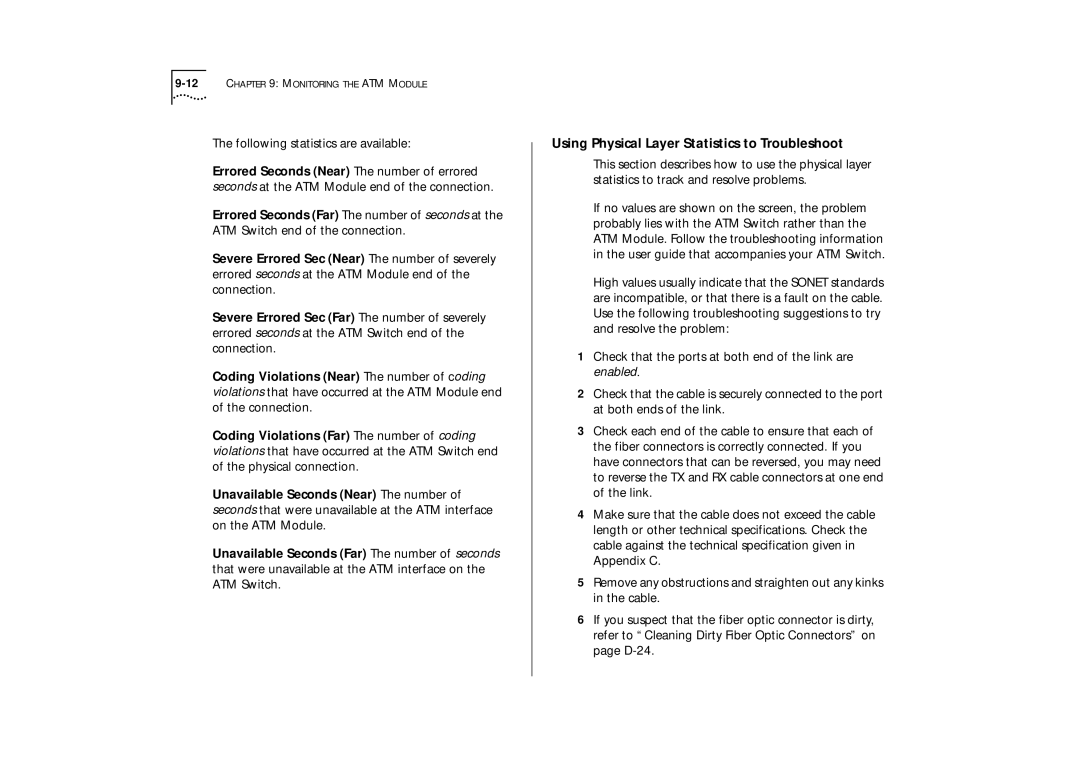
The following statistics are available:
Errored Seconds (Near) The number of errored seconds at the ATM Module end of the connection.
Errored Seconds (Far) The number of seconds at the ATM Switch end of the connection.
Severe Errored Sec (Near) The number of severely errored seconds at the ATM Module end of the connection.
Severe Errored Sec (Far) The number of severely errored seconds at the ATM Switch end of the connection.
Coding Violations (Near) The number of coding violations that have occurred at the ATM Module end of the connection.
Coding Violations (Far) The number of coding violations that have occurred at the ATM Switch end of the physical connection.
Unavailable Seconds (Near) The number of seconds that were unavailable at the ATM interface on the ATM Module.
Unavailable Seconds (Far) The number of seconds that were unavailable at the ATM interface on the ATM Switch.
Using Physical Layer Statistics to Troubleshoot
This section describes how to use the physical layer statistics to track and resolve problems.
If no values are shown on the screen, the problem probably lies with the ATM Switch rather than the ATM Module. Follow the troubleshooting information in the user guide that accompanies your ATM Switch.
High values usually indicate that the SONET standards are incompatible, or that there is a fault on the cable. Use the following troubleshooting suggestions to try and resolve the problem:
1Check that the ports at both end of the link are enabled.
2Check that the cable is securely connected to the port at both ends of the link.
3Check each end of the cable to ensure that each of the fiber connectors is correctly connected. If you have connectors that can be reversed, you may need to reverse the TX and RX cable connectors at one end of the link.
4Make sure that the cable does not exceed the cable length or other technical specifications. Check the cable against the technical specification given in Appendix C.
5Remove any obstructions and straighten out any kinks in the cable.
6If you suspect that the fiber optic connector is dirty, refer to “Cleaning Dirty Fiber Optic Connectors” on page
